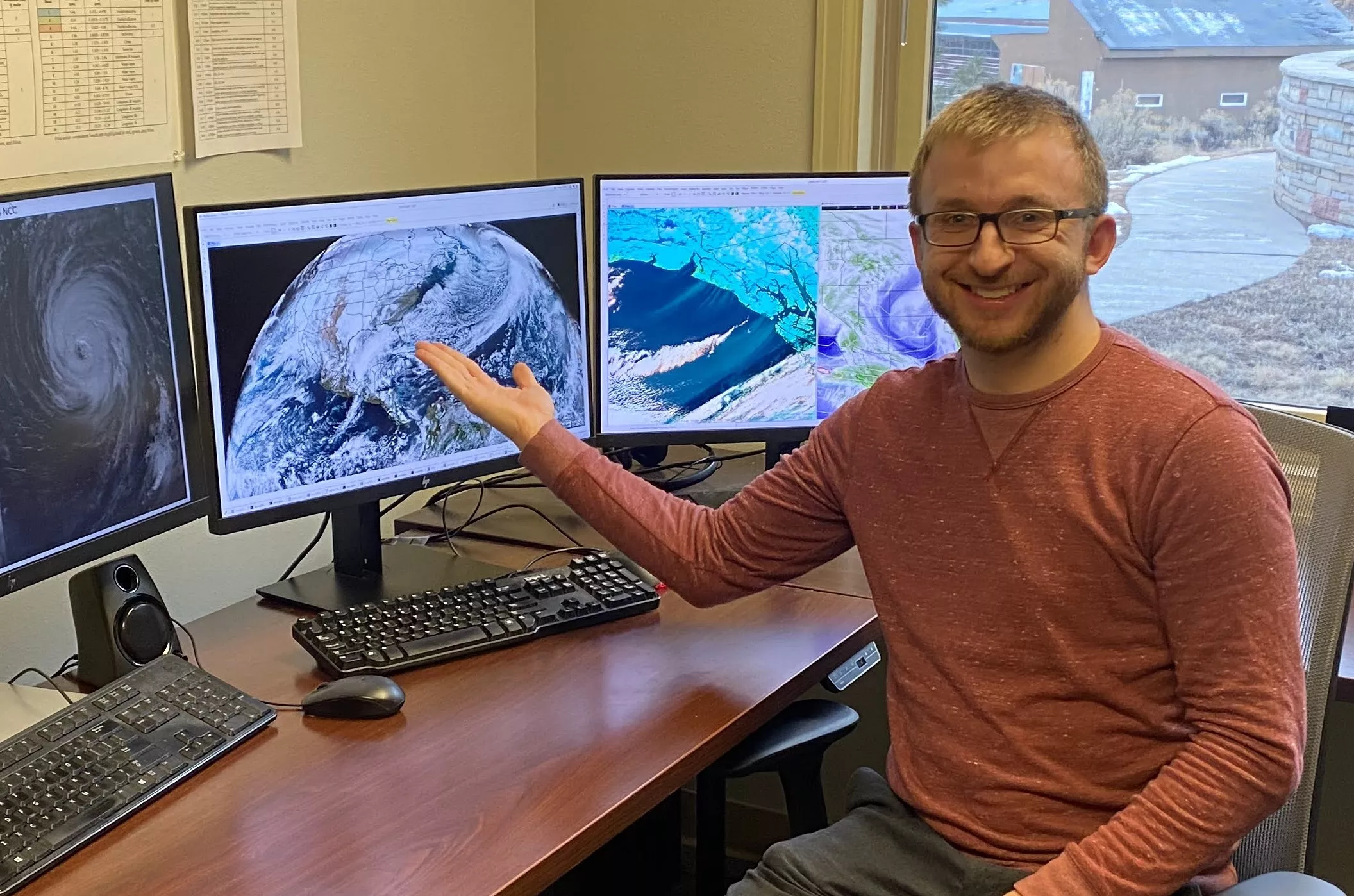
Bill Line, a research scientist with NOAA NESDIS’ Center for Satellite Applications and Research (STAR), has been selected as the 2024 winner of NOAA’s prestigious David S. Johnson Award. He will receive the award on March 22, 2024, at the 67th Annual Dr. Robert H. Goddard Memorial Dinner in Washington, D.C.
The David S. Johnson Award is named after the first assistant administrator of NOAA’s Satellite and Information Service, and honors professional scientists who have shown outstanding innovation in the use of satellite data for operational environmental applications.
Line is being recognized for his research, development and implementation of new satellite imagery products--including the Advanced Baseline Imager on NOAA’s GOES-R series and the Visible and Infrared Imaging Radiometer Suite (VIIRS) on NOAA’s JPSS series—in the forecasting and warning of weather hazards in the U.S.
"The Johnson award recognizes exemplary work from young scientists like Bill Line who are using satellite data to help save lives, protect the economy and benefit society overall," said Dr. Stephen Volz, assistant administrator for NOAA’s Satellite and Information Service.
In particular, Line’s efforts created new tools for detecting freezing sea spray, a significant maritime danger, and blowing snow, which can threaten air transportation and motorists. Line found that both of these could be detected by combining multiple satellite channels into a single multispectral product—a critical innovation for detecting and alerting the public about these hazards.
“Observations of sea spray and blowing snow are often limited to webcams, surface observations and human reports,” Line said. “Having a signature in satellite imagery significantly improves a forecaster's ability to warn of ongoing or approaching freezing sea spray or blowing snow.”
Growing up in southeastern Pennsylvania and northeastern Wisconsin, Line later received his Bachelors and Masters degrees from the University of Wisconsin-Madison. His career path includes GOES-R Satellite Liaison at NOAA’s Storm Prediction Center in Norman Oklahoma, and meteorologist at NOAA’s National Weather Service in Pueblo, Colorado. In 2019, Line began his current work at NOAA NESDIS, where he develops satellite applications and works closely with operational users.
